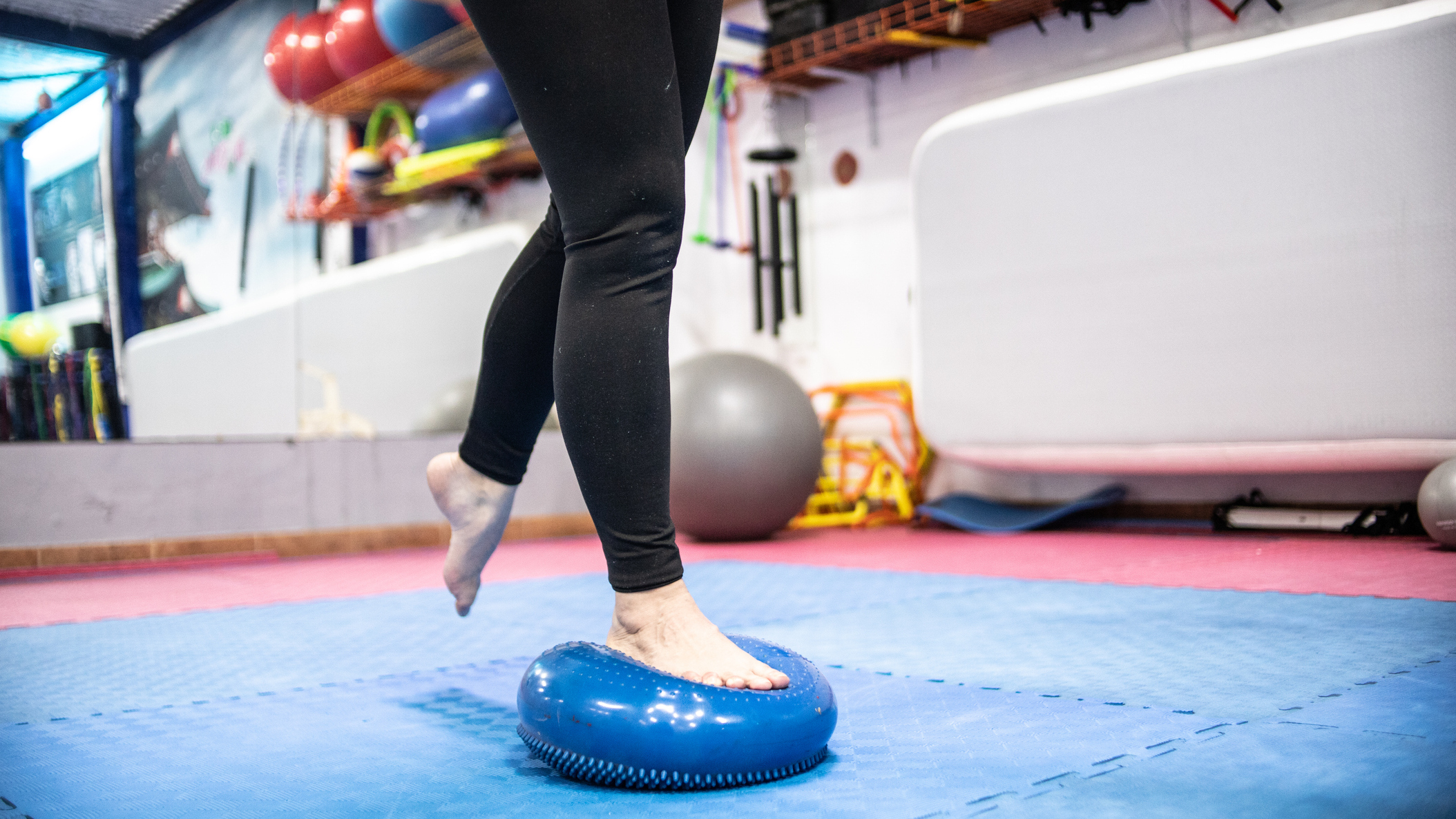Runners—this quick routine will protect your ankles and help avoid injury
If you’ve rolled an ankle on a run, add this quick routine to your training to prevent it from happening again


It's annoyingly easy to roll your ankle when running. Uneven ground, tired running form, muscular imbalances and running shoes with towering stacks of foam underfoot all heighten the risk of a misstep.
And if you've turned your ankle once, it’s quite likely to happen again and again unless you work on getting them stronger, according to kinesiologist Carling Rees.
Rees recently shared this quick routine to strengthen weak ankles on Instagram and I got in touch with her to find out what else you can do to avoid ankle sprains.
How to do this ankle-strengthening workout
A post shared by Carling | Mobile Kinesiologist (@carlingrees.kinesiology)
A photo posted by on
Why every runner should do ankle strength training
A sprained or rolled ankle is often the result of a lack of stability in key areas like the arch, tibialis anterior and, sometimes, calves, explains Rees. “Genetics can also play a role—factors like hypermobility (loose ligaments), structural muscle imbalances or even naturally higher arches can contribute to ankle instability. Other common factors include uneven terrain, improper footwear, and a lack of foot and ankle strength.”
So what’s the solution? “It’s important to train the lower legs just like you would train your lungs for a marathon, or your quads for a sprint.” says Rees.
“Incorporating ankle mobility exercises before a run, strengthening the anterior tibialis, and adding explosive movements can all help build resilience.
“Balance plays a huge role in ankle stability, yet it’s often one of the most under-trained areas. Strong muscles are important, but without good proprioception (your body's ability to sense its position in space), those muscles may not activate quickly enough to prevent a misstep.
Get the Fit&Well Newsletter
Start your week with achievable workout ideas, health tips and wellbeing advice in your inbox.
“Training balance—through single-leg exercises, unstable surface drills and reaction-based movements—helps runners react faster and correct their gait before an injury occurs.”

A balance disc is one way to train your balance using an unstable surface
And if you do get injured, stronger ankles means that you will recover quicker.
“When an ankle sprains but doesn’t break or tear, that tells us it takes a smaller amount of force to overstretch the ligaments—just enough to cause instability, but not enough for a full rupture.
“If the surrounding muscles are strong, they provide better control and help correct gait in real-time, reducing the likelihood of future sprains or more severe injuries.”
How often should runners do ankle-strengthening exercises? “I recommend two to three times per week, depending on their training load,” says Rees.
“In addition to strength work, warming up the ankles before a run with mobility drills, activation exercises and controlled movements can help prepare them for impact and reduce injury risk.
“Strengthening other areas—like the glutes, quads, and core—is just as important because a strong kinetic chain improves running form and reduces overall injury risk.”
Maddy Biddulph is a freelance journalist specializing in fitness, health and wellbeing content. With 26 years in consumer media, she has worked as a writer and editor for some of the bestselling newspapers, magazines and websites in the US and UK.
She is also a qualified L3 personal trainer and weight loss advisor, and helps women over 40 navigate menopause by improving their physical and mental strength. At Maddy Biddulph Personal Training, she runs one-to-one and small group training for menopausal women who want to get fit to ease symptoms and feel like themselves again.
-
 “It was so strenuous”—how a celebrity PT went from almost quitting the gym to the new star trainer on Chris Hemsworth’s Centr app
“It was so strenuous”—how a celebrity PT went from almost quitting the gym to the new star trainer on Chris Hemsworth’s Centr appA heavy setback on his first day in the gym almost turned Korey Rowe off exercise for good—but one small step got him back on track
By Sam Rider
-
 A personal trainer says these are the exercises to do if you’ve got no equipment and only 20 minutes to spare—here’s my verdict
A personal trainer says these are the exercises to do if you’ve got no equipment and only 20 minutes to spare—here’s my verdictThis quick workout targets the legs, glutes and core
By Jennifer Rizzuto